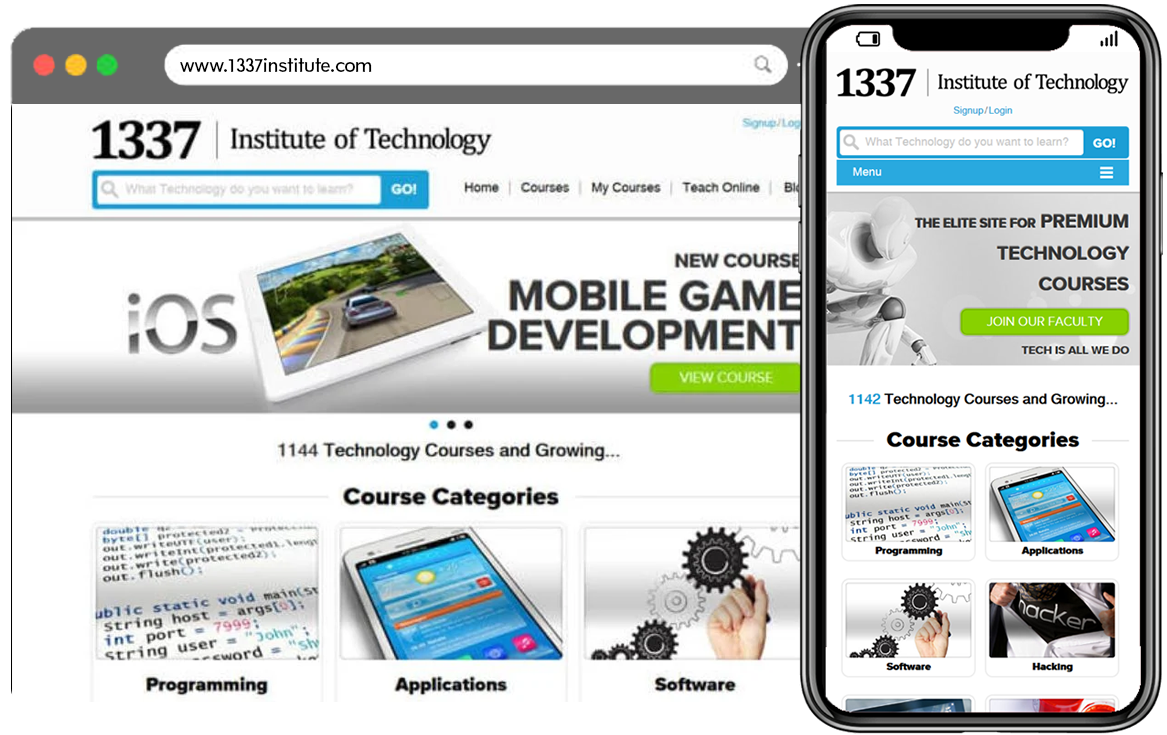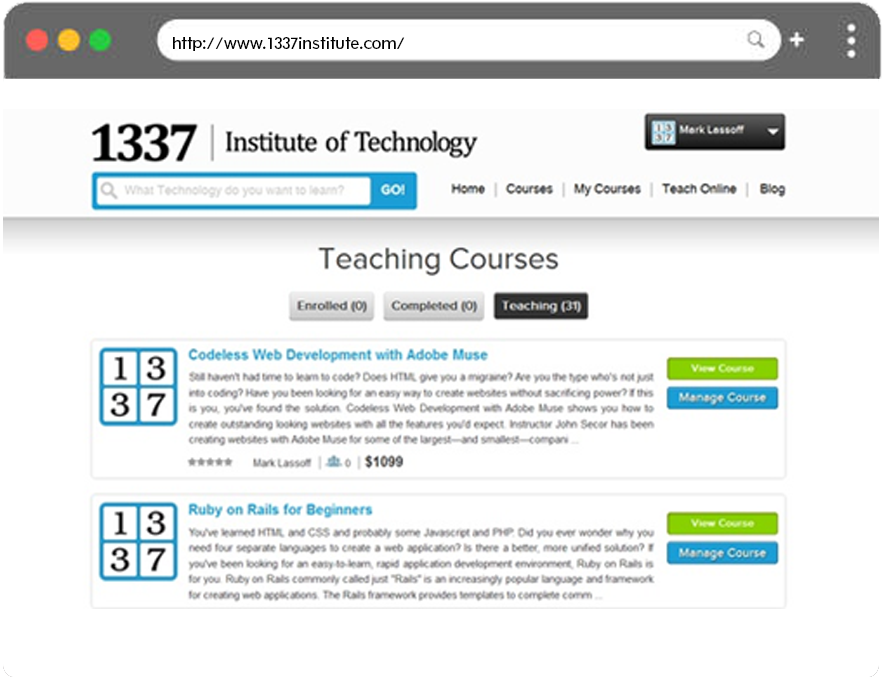
A web based Online Learning Platform that helps Collaboration between Teachers and Students

1337 Institute of Technology is an online learning management system for both instructors and students, that offers itself as the foundation for the very best of technical courses. For students, it offers a plethora of technical courses from industry experts; for instructors it offers a captive/non-captive student base from across the world who are eager to learn. It features both free and paid courses.
1337 Institute encourages self-paced learning with various content forms like Videos, Slides, PDFs, and Mashups of Videos and Texts. Its rich tools for online content and course creation for instructors is the USP that makes it stand out. instructors can also collaborate with other instructors on managing courses. The platform also helps in sharing the course fee with distributed payments.

While 1337 Institute of Technology is not a first of its kind, our client needed it to be more than just a regular learning management system.
While we needed to implement the basic knowledge-sharing platform functionality, offering access to both instructors and learners, there needed to be a few special offerings.
Some of the offerings that the client wanted to make were the ability to create lessons in text, video, and audio formats, availability of question manager, new individual tabs, tests, quizzes, individual class, course creation with various content styles like videos, slides, PDFs, and mashups of videos and texts, payment gateways, multilingual courses, etc.
The site also needed to be fully responsive so that all of its major features can be accessed using any interface whether desktop or mobile.

To be able to fulfill all the requirements, here are the solutions that we created and integrated for 1337 Institute of Technology LMS:
The website was created as a marketplace website that enabled instructors to register, create, manage courses, and opt for several useful features that made their courses complete and engaging in all respects.
They can choose to host free or paid courses, and also add different instructors to a course if need be.On the other hand, students can also register for these courses with the flexibility to study the course at their own individual pace.
One can actually be both, an instructor and a student with one and the same login
This feature happens to be one of the most useful features for both instructors and students. With the introduction of a Question Manager feature, instructors are able to better manage (add/delete/edit) questions for each module.
Using these questions, instructors can create quizzes/tests for different classes for their learners.
Students, on the other hand, can take these quizzes/tests at their own convenience. Even if they are not able to complete it in one go, they can revisit another time and complete them.
To enable easy payment and receipt, we integrated PayPal's adaptive payment method. It would allow the user to make multiple (up to 5) transactions in a go. It was done primarily to enable the sharing of the course fee receipt among the admin, the course owner, and all the managing instructors, based on their agreed percentage of the share.
This feature would allow those students those not affiliated to any university or school. The 'new individual' and 'individual class' functionalities enables them to access course material, lessons, tests, and projects as an individual. After having completed a course, individuals can take test and even download certificates of completion. It will even allow them access to certification database.
The UI was crafted as per W3C standards. The design was made responsive so that it can be accessed and used on any device including mobile devices.A Sphinx Search server was introduced on the website, which increased the search speed and enhanced predictability features. It would enable the users to alter their searches to granular levels and find relevant courses much faster.
AWS S3 bucket was used for data storage and AWS CloudFront has been used for CDN services, which makes domain space more available and loading of content such as video/audio faster and easier, thus reducing waiting time for video/audio to buffer.
OWASP 10 rules were implemented to make application secure
With diverse backend functionalities, the instructors would get immense flexibility at the frontend. It would enable them to create lessons, modules, and courses using different types of content like text, documents, pdf, presentations, video files, audio files, and even create an instructional video-doc mashup. The courses can also be offered in multiple languages.
We custom created the Mashup Creator using HTML 5 video players that are compatible with most web and mobile browsers. It would let the Instructor upload video files and related documents and then attach each video frame with the instructions from the doc. When played at the students’ end, the mashup player would display the video and the document pages side by side. It would also make the pages from the document slide automatically according to the frames to which the pages are attached.
The result is a responsive, specialized marketplace website that takes eLearning to another level with the useful functionalities it offers for both ends of the users—the instructors as well as the students. We successfully created a portal wherein